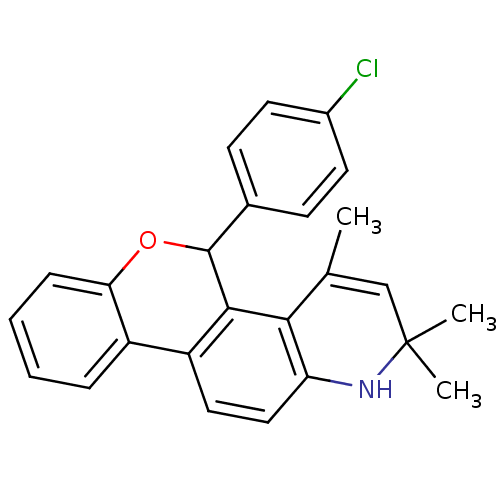BDBM50062417 5-(4-Chloro-phenyl)-2,2,4-trimethyl-2,5-dihydro-1H-6-oxa-1-aza-chrysene::CHEMBL286595
SMILES CC1=CC(C)(C)Nc2ccc3-c4ccccc4OC(c4ccc(Cl)cc4)c3c12
InChI Key InChIKey=HTCMKQLSSZWFTP-UHFFFAOYSA-N
Activity Spreadsheet -- Enzyme Inhibition Constant Data from BindingDB
 Found 4 hits for monomerid = 50062417
Found 4 hits for monomerid = 50062417
Affinity DataEC50: 14nMAssay Description:Compound was tested for agonistic activity by cotransfection assay against human Progesterone receptor in CV-1 cellsMore data for this Ligand-Target Pair
Affinity DataEC50: 14nMAssay Description:Agonistic activity to the human progesterone receptor(hPR)assayed in CV-1 cells in cotransfection assay.More data for this Ligand-Target Pair
Affinity DataEC50: 32nMAssay Description:Agonistic effect on transcriptional activity in T47D cells expressing human Progesterone receptorMore data for this Ligand-Target Pair
Affinity DataEC50: 15nMAssay Description:Agonistic activity was measured for modulation of hPR-B (human progesterone receptor) in co-transfected CV-1 cells.More data for this Ligand-Target Pair
